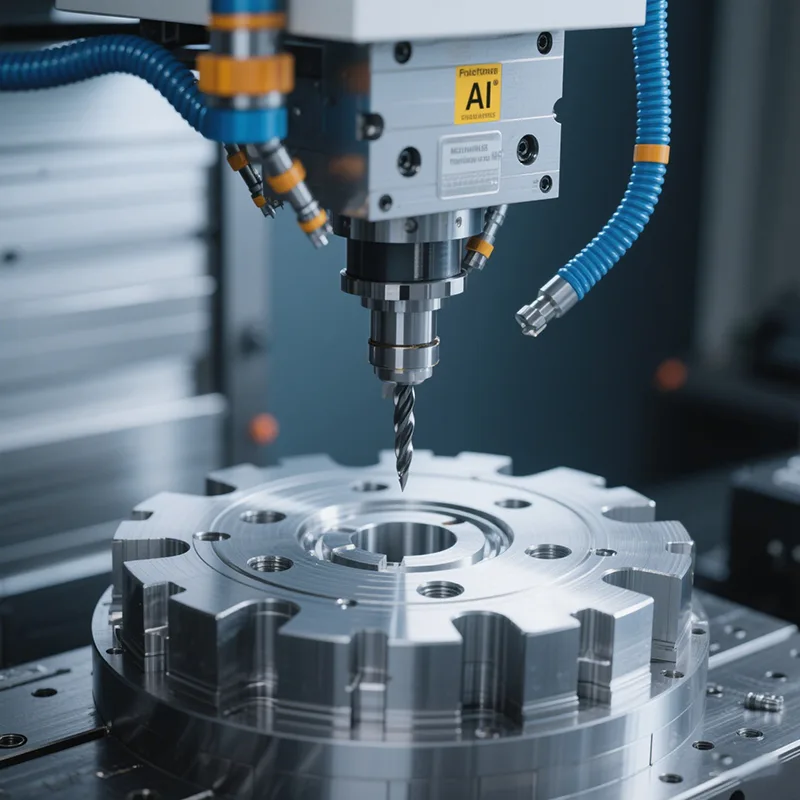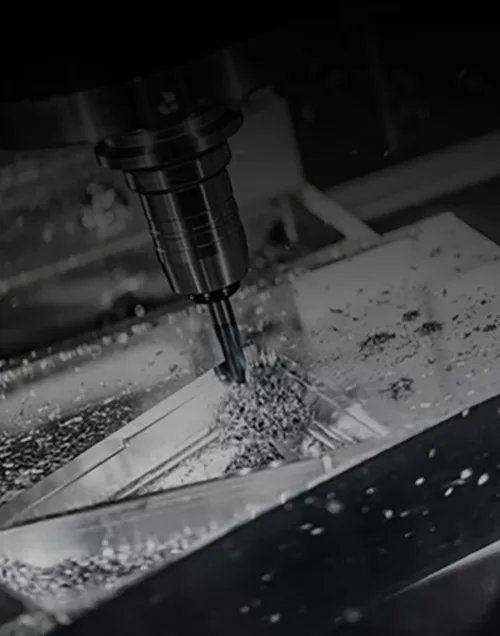In the rapidly evolving landscape of modern manufacturing, high-precision CNC (Computer Numerical Control) milling stands as a cornerstone technology, enabling the production of intricate components with microscopic accuracy. This advanced machining process, which uses computerized controls to direct the movement of cutting tools, has become indispensable across industries demanding precision, from aerospace to medical devices. Mastering high-precision CNC milling requires a deep understanding of key techniques and their applications.

At the heart of precision milling lies the integration of cutting-edge equipment and software. State-of-the-art CNC milling machines are equipped with high-resolution linear scales and advanced servo motors, ensuring positional accuracy within micrometers. For example, five-axis CNC mills allow simultaneous movement in multiple directions, enabling complex geometries to be machined in a single setup, reducing errors caused by multiple repositioning. Additionally, advanced CAD/CAM software plays a crucial role. It generates optimized toolpaths, simulates machining processes, and predicts potential issues, ensuring that theoretical designs translate into precise physical parts.
Tooling selection and management are equally critical for achieving high precision. High-quality cutting tools made from materials like carbide, cubic boron nitride (CBN), or polycrystalline diamond (PCD) offer superior hardness and wear resistance. Carbide end mills, for instance, are ideal for machining hardened steels, while PCD tools excel in finishing aluminum alloys. Regular tool wear monitoring, often facilitated by in-machine sensors, is essential. As a tool wears, its cutting edge deteriorates, leading to dimensional inaccuracies. By replacing tools proactively based on wear data, manufacturers maintain consistent precision throughout production runs.
Process parameter optimization is another key technique. Variables such as spindle speed, feed rate, and depth of cut interact intricately to affect machining precision. High-speed milling, for example, reduces cutting forces and heat generation, minimizing workpiece deformation—an especially crucial factor when machining thin-walled components. However, optimizing these parameters requires a balance; too high a speed can cause tool chatter, while excessive feed rates may compromise surface finish. Manufacturers often rely on trial-and-error testing, simulation software, or machine learning algorithms to determine the optimal settings for specific materials and geometries.
The applications of high-precision CNC milling span diverse industries. In aerospace, it's used to create engine components like turbine blades and structural parts that withstand extreme conditions. These parts demand tight tolerances (often within ±0.005 mm) to ensure aerodynamic efficiency and safety. In the medical field, precision milling produces implants and surgical instruments with biocompatible materials, such as titanium alloys. The smooth surfaces and precise fit achieved through milling enhance patient comfort and reduce the risk of complications.
The electronics industry benefits from high-precision milling for manufacturing printed circuit boards (PCBs) and miniature components. With the trend towards smaller, more powerful devices, the ability to mill tiny features with sub-millimeter accuracy is essential. Additionally, the automotive sector relies on CNC milling for prototyping and producing high-performance parts, like engine blocks and transmission components, where precision directly impacts fuel efficiency and durability.
In conclusion, mastering high-precision CNC milling is a multi-faceted challenge that demands expertise in equipment, tooling, software, and process optimization. As industries continue to push the boundaries of precision, the techniques and applications of CNC milling will evolve, driven by advancements in automation, artificial intelligence, and material science. For manufacturers aiming to stay competitive, investing in high-precision milling capabilities isn't just an option—it's a necessity.
 CapabilitiesPrototypes and production partsMechanical ManufacturingMechanical Manufacturing Capability: Excellent Craftsmanship, Creating Exceptional QualityParts Manufacturing and ProcessingParts Manufacturing and Processing: Meticulous Craftsmanship, Creating Premium PartsMaterial Surface FinishesMaterial Surface Finishes: Refining Processes, Reinventing Material ExcellenceInspection and Quality ControlInspection and Quality Control: Precise Control, Quality AssuranceHeat Treatment ServicesHeat Treatment Services: Precise Temperature Control, Reinventing Material ExcellencePrecision AssemblyPrecision Assembly: Meticulous Craftsmanship, Achieving Perfect Combinations
CapabilitiesPrototypes and production partsMechanical ManufacturingMechanical Manufacturing Capability: Excellent Craftsmanship, Creating Exceptional QualityParts Manufacturing and ProcessingParts Manufacturing and Processing: Meticulous Craftsmanship, Creating Premium PartsMaterial Surface FinishesMaterial Surface Finishes: Refining Processes, Reinventing Material ExcellenceInspection and Quality ControlInspection and Quality Control: Precise Control, Quality AssuranceHeat Treatment ServicesHeat Treatment Services: Precise Temperature Control, Reinventing Material ExcellencePrecision AssemblyPrecision Assembly: Meticulous Craftsmanship, Achieving Perfect Combinations IndustriesDeveloping revolutionary productsAutomotivePrecision Machining Services for Auto Parts in the Automotive Manufacturing IndustryMedical Equipment & HealthcarePrecision Medical Machining ServicesMilitary and AerospacePrecision Machining Services for Military and Aerospace ManufacturingElectronics and SemiconductorPrecision Machining Services for Electronics and Semiconductor ManufacturingEnergy and Industrial EquipmentPrecision Machining Services for Energy and Industrial Equipment Manufacturing
IndustriesDeveloping revolutionary productsAutomotivePrecision Machining Services for Auto Parts in the Automotive Manufacturing IndustryMedical Equipment & HealthcarePrecision Medical Machining ServicesMilitary and AerospacePrecision Machining Services for Military and Aerospace ManufacturingElectronics and SemiconductorPrecision Machining Services for Electronics and Semiconductor ManufacturingEnergy and Industrial EquipmentPrecision Machining Services for Energy and Industrial Equipment Manufacturing Metal MachiningProtoypes and production partsTitanium Alloy MachiningPrecision CNC Machining of Titanium MaterialsCopper and Aluminum MachiningPrecision CNC Machining of Copper and Aluminum AllStainless SteelMachiningPrecision CNC Machining of Stainless Steel MateriaDie Steel MachiningPrecision CNC Machining of Die Steel MaterialsComposite Material MachiningPrecision CNC Machining of Composite Materials
Metal MachiningProtoypes and production partsTitanium Alloy MachiningPrecision CNC Machining of Titanium MaterialsCopper and Aluminum MachiningPrecision CNC Machining of Copper and Aluminum AllStainless SteelMachiningPrecision CNC Machining of Stainless Steel MateriaDie Steel MachiningPrecision CNC Machining of Die Steel MaterialsComposite Material MachiningPrecision CNC Machining of Composite Materials Plastic MachiningProtoypes and production parts
Plastic MachiningProtoypes and production parts
